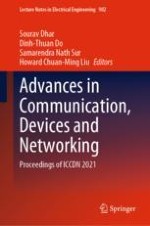This book covers recent trends in the field of devices, wireless communication and networking. It gathers selected papers presented at the 5th International Conference on Communication, Devices and Networking (ICCDN 2021), which was organized by the Department of Electronics and Communication Engineering, Sikkim Manipal Institute of Technology, Sikkim, India, on 15–16 December 2021. Gathering cutting-edge research papers prepared by researchers, engineers and industry professionals, it will help young and experienced scientists and developers alike to explore new perspectives and offer them inspirations on how to address real-world problems in the areas of electronics, communication, devices and networking.
